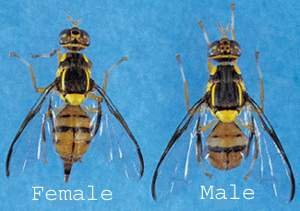No additional Oriental fruit flies have been found in the Morgan Hill infestation zone and a new life cycle has started, resetting the count to zero, according to the Santa Clara County Farm Bureau.
The Farm Bureau credits “the quick action taken by the county Agricultural Commissioner’s office and the California Department of Food and Agriculture” so local growers were able to avoid a quarantine and continued to market their produce under normal conditions.
The California Secretary of Agriculture issued a proclamation July 27 declaring an emergency that authorized an eradication process.
Four flies were originally found near the area of Tennant Avenue and Monterey Road in Morgan Hill, triggering an “infestation” determination along with heavy trapping and bait station applications. This process differs from a quarantine, wherein local crops cannot be moved.
Many growers in the infestation area began Oriental fruit fly treatments in case the infestation reached a quarantine level.
State eradication treatments will continue for another Oriental fruit fly life cycle and the number of detection traps deployed in the eradication area is being reduced to standard trapping protocol levels.
Please contact your biologist or Eric Wylde at 408-465-2900 for more information.
About the Oriental fruit fly
The tiny flies – which are about the size of a pinhead and native to Southern Asia – burrow inside fruit, lay eggs and populate.
If not eradicated, they threaten a multimillion-dollar industry. The last county infestation in Milpitas caused major concern in 2010, and was fully eradicated in July 2011, according to the county.
Infestations have occurred in California over the last 30 years and have been successfully wiped out before any critical damage, according to County Agriculture Commissioner Kevin O’Day. The fruit fly is typically found in urban areas, he said, because they “hitchhike” on fruit that is from an infested area such as Hawaii or the Philippines.














